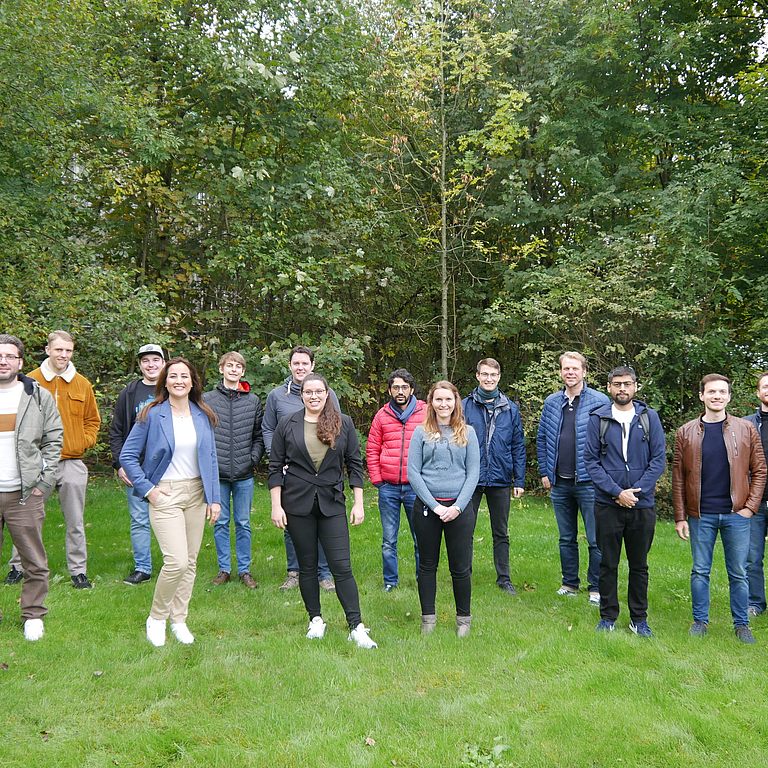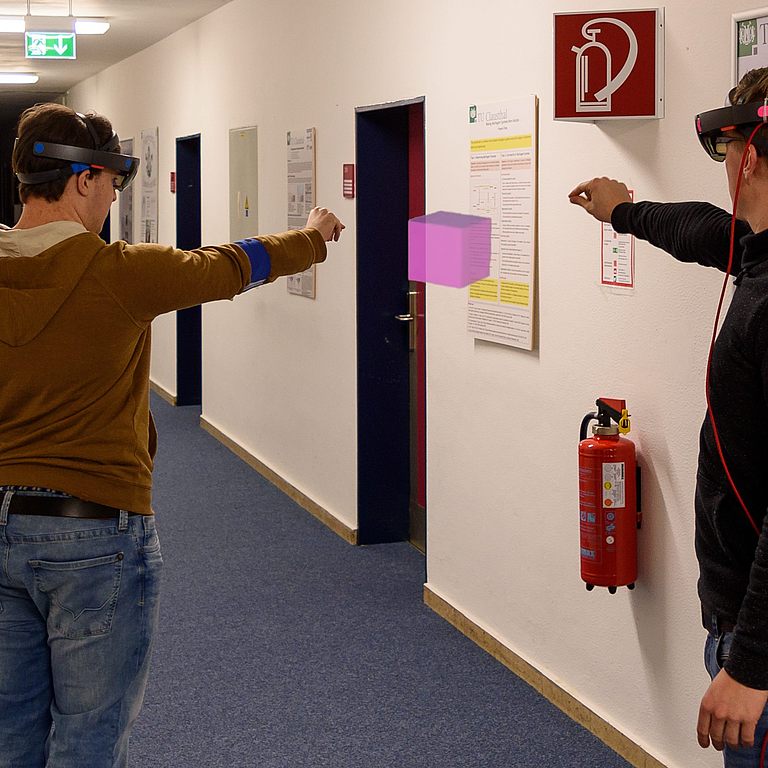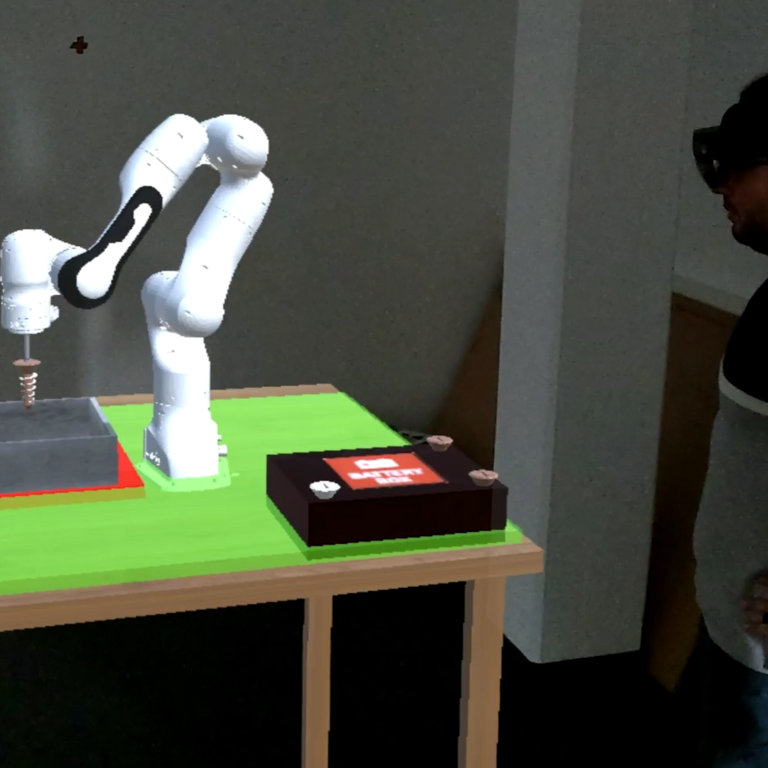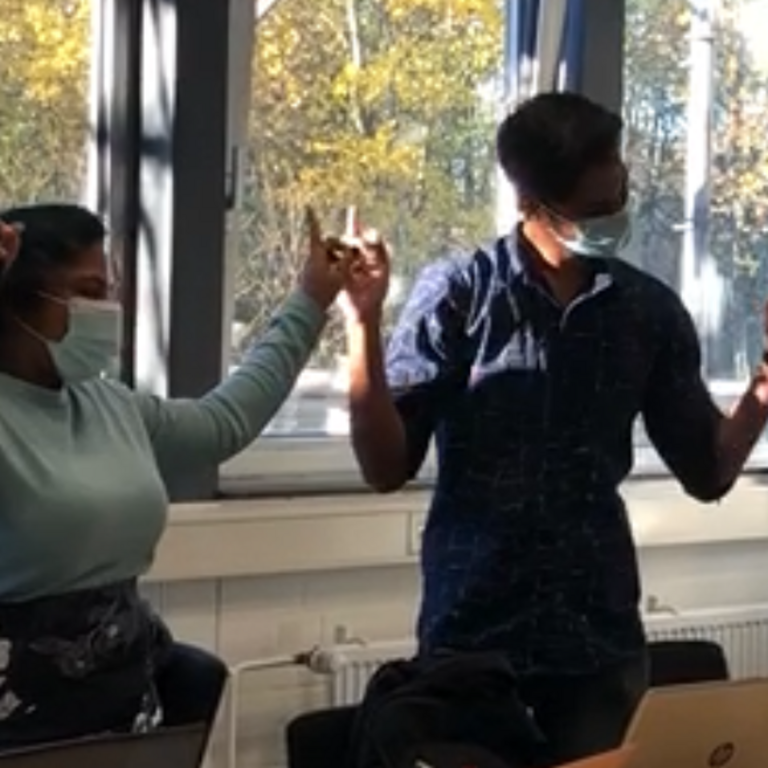Ubiquitous Interaction Lab
The term "Ubiquitous Computing", which is being used with increasing frequency over the last years, refers to the usage of computers in different devices that used to (and were able to) exist without the addition of a computer. It also describes human interaction was used to be performed without computers but is now aided / done with computers. Through this omnipresence of computers, the way we interact with technology is changing and has to change. Ubiquitous interaction is (here) mainly referring to the different interaction possibilities, that these "ubiquitous" devices allow / enable.
It is one of our primary goals to research "Ubiquitous Interaction". Examples of these interactions can be found in communicating through apps on mobile phones between occupants of connected vehicles or in virtual surroundings. In our Ubiquitous Interaction Lab we will research and develop solutions to support humans with new technologies within the area of Augmented and Mixed Reality, Ubiquitous Computing, Wearable Computing and the Internet of Things.
The lab will be used for research projects of the HCIS-team as well as for providing students with the possibility of writing their theses, work on projects or pursue a research track. An emphasis (within the lab) is currently set on Augmented Reality. Currently, research is done with the Microsoft HoloLens, but we are planning to add additional devices and technologies in the near future.
Issues that are being discussed are, among others, the possibilities to aid cooperating participants through Augmented Reality, the usage of new technologies such as Augmented Reality or IoT in specific user scenarios as well as researching different interaction opportunities with all the technical devices humans handle on a daily basis.
Augmented Reality Training for Industrial Assembly Work
Using Augmented Reality in training situations aimed at introducting new coworkers to a workflow could be feasible as well. Workflows could be showcased by an augmented reality application instead of an expert, supplement classic trainings und, as such, save valuable work hours. This study compared an augmented reality system used for introducing workers into an assembly task with training for the same task conducted by a human. The rsulting scientific paper can be viewed here. The video shows the presentation that goes with the paper.
Getting out of Out of Sight
As our research on cooperative work using augmented reality continues, we designed an experiment for small groups of people cooperation and coordinating in an indoor environment. Participants were tasked with finding and retrieving a total of 8 virtual puzzle pieces (colored cubes) that were located around the experiment area (an office building consisting of 4 rooms connected through a hallway). Each group member received an orientation and awareness mechanism (a map, a compass or an x-ray vision) or a combination of them displayed on their HoloLens.
The paper that resulted from this experiment can be found here.
E-Racer in virtual windtunnel
This project was developed as part of the exposition on the IdeenExpo 2019 in cooperation with the Institute of Applied Mechanics and the Green Voltage Racing Team (GVR) at the TU Clausthal. In this project the Microsoft HoloLens displays information and figures over the real GVR racer. The application allows a single-player and a synchronized multi-player tour. The augmented information includes the visualization of the surface pressure and the streamlines, an exploded view of the battery box and an animation of the drive chain.
Visual Search
As part of our research on how people and groups cooperate during search tasks in Augmented Reality, we developed an experiment. Our Ubiquitous Interaction Lab implemented a Unity based HoloLens application where groups of two had to cooperate together to solve a number of search tasks. After a brief training the participants had to find and pick a specific virtual object among a number of different virtual objects.
To evaluate these processes afterwards, an analysis application for a desktop computer was also developed. It reconstructed the actual processes from logged data to help understand what participants were doing and how they were interacting with objects and each other.
Room & Address:
Clausthal University of Technology
Julius-Albert Str. 4, Room 220
38678 Clausthal-Zellerfeld
Germany
Contact
Michael Prilla



